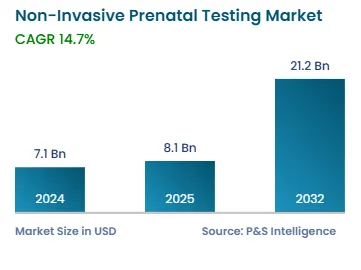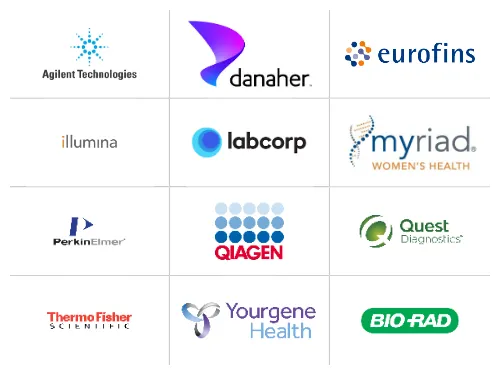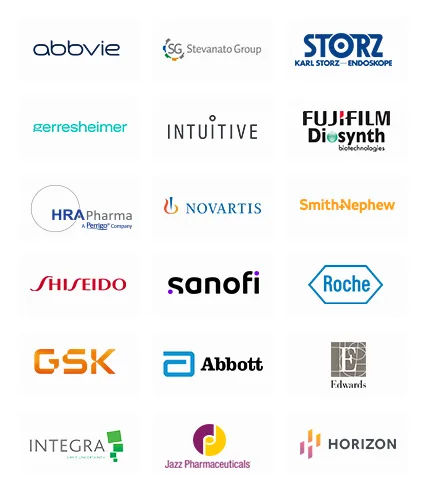NIPT Market Future Prospects
The non-invasive prenatal testing market value stands at USD 7.1 billion in 2024, and it is expected to advance at a CAGR of 14.7% during 2025–2032, to reach USD 21.2 billion by 2032.
The growth can be ascribed to the increasing prevalence of chromosomal abnormalities and rising demand for early detection methods. Approximately, 14% of the stillbirths are due to inherited diseases in pregnant women in the age group of <24 years, and the number rises to 38% in women 40–44 years of age.
Among all the genetic abnormalities, Trisomy 21 holds the largest share. Its annual prevalence is 1 in 800 newborns, which makes it the most-common chromosomal abnormality in the U.S. In absolute terms, in the U.S., more than 5,000 babies are born with Down syndrome (Trisomy 21) every year.
Down syndrome increases in likelihood as the mother ages, and most of the times, babies born with it weigh even less than 1,500 grams, which is way less than the weight of a normal infant. Moreover, approximately 85% of the individuals born with this condition die within a year, and only 50% live longer than 50 years.
Moreover, in the U.S., about 1 in 5,000 newborns have Trisomy 18, and approximately 1 in 16,000 have Trisomy 13. In the same way, the prevalence of sex chromosome disorders is about 1 in 2,000, and these conditions are brought about by various environmental factors, including UV radiation and smoking.
In order to broaden their share in the industry, biotech companies are focused on various methods, including product launches and collaborations with other companies. Specifically, major players have launched many sequencing, genotyping, and array-based solutions for DNA, RNA, and protein analysis. These tests work on the advanced whole-genome NGS technology, which is able to detect the changes in maternal chromosomes and fetal DNA.



